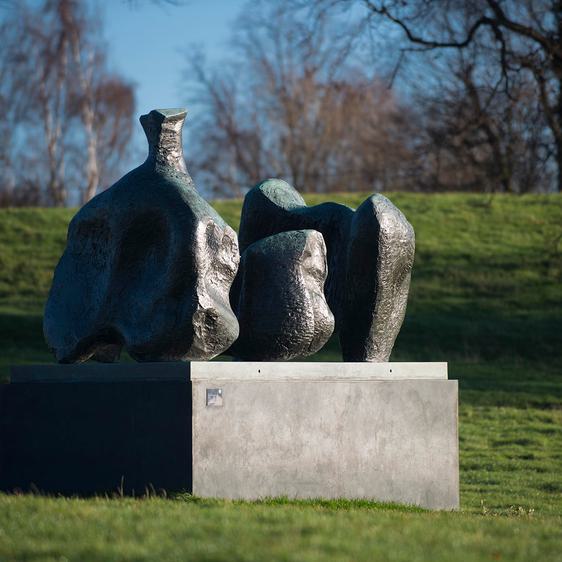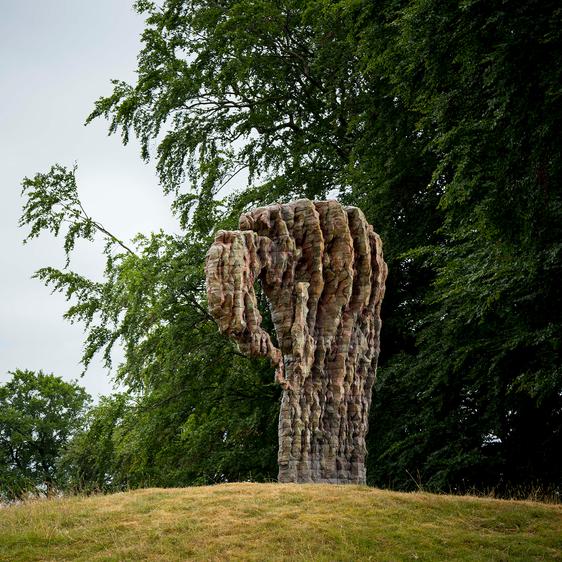
Henry Moore: Upright Motives No. 1 (Glenkiln Cross): No 2; No 7
Art Outdoors /Henry Moore: Upright Motives No. 1 (Glenkiln Cross): No 2; No 7
The Upright Motives were part of a large commission, for the courtyard of the new Olivetti building in Milan. Moore stated that “my immediate thought was that any sculpture that I should do must be in contrast to this horizontal rhythm. It needed some vertical form in front of it. At the time I also wanted to have a change from the Reclining Figure theme that I had returned to so often.”
Altogether Moore created twelve Upright Motives in the mid 1950s. The sculpture which developed a primitive cruciform head later became known as the Glenkiln Cross, after a farm on a private estate in Scotland where the first cast of the work was sited. In their powerful symbolism these pieces owe much to the tall, upright stones, known as menhirs, from prehistoric times. Moore brought all these influences together to create forms which are unmistakably his own.
You might also like
- Art Outdoors

Henry Moore: Three Piece Reclining Figure No.1
- Art Outdoors

Jonathan Borofsky: Molecule Man 1+1+1
- Art Outdoors

James Turrell: Deer Shelter Skyspace
The Deer Shelter Skyspace creates a place of contemplation and revelation, harnessing the changing light of the Yorkshire sky. It allows us to take time to sit, to think, and to contemplate; an open invitation to access a peacefulness that is often denied in our busy lives that abound with technology and speed. - Art Outdoors

Ursula von Rydingsvard: Heart in Hand
Heart in Hand relates to an earlier, larger work called Luba that was made in cedar and bronze, and is on permanent display at Storm King Art Center in upstate New York. Both works are intended to suggest a sense of protection and nurturing, like the arm of a mother cradling a baby.


